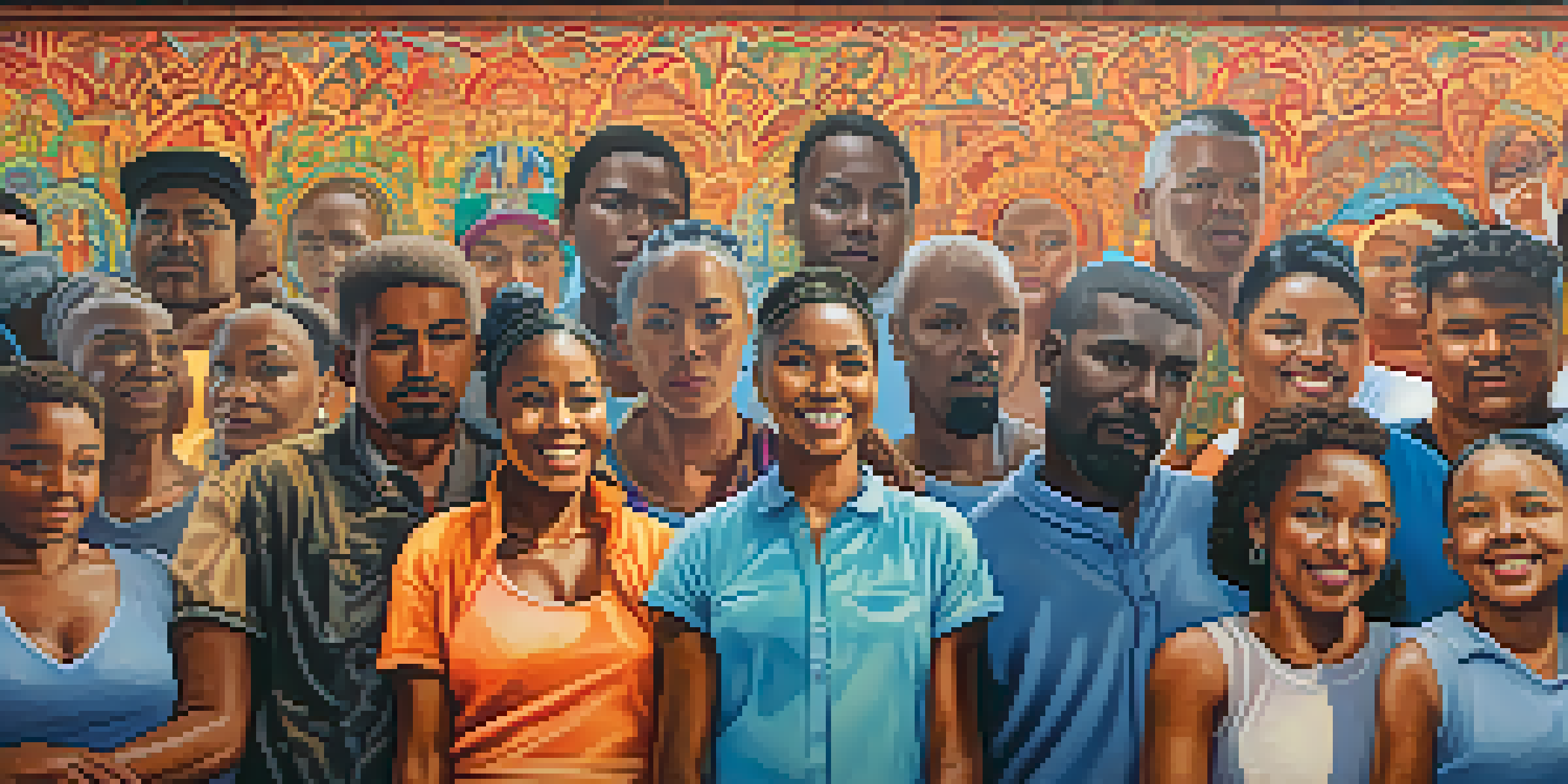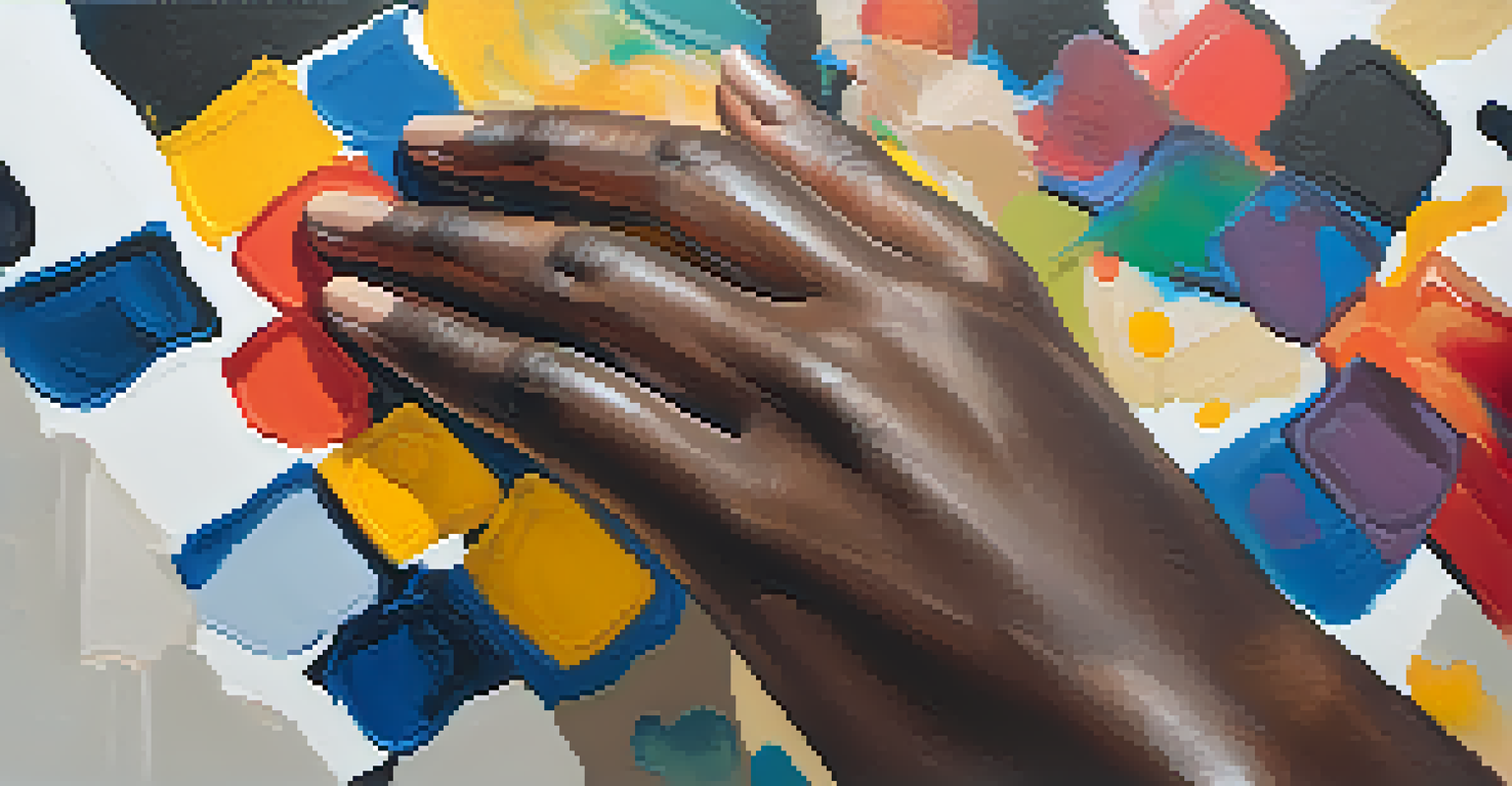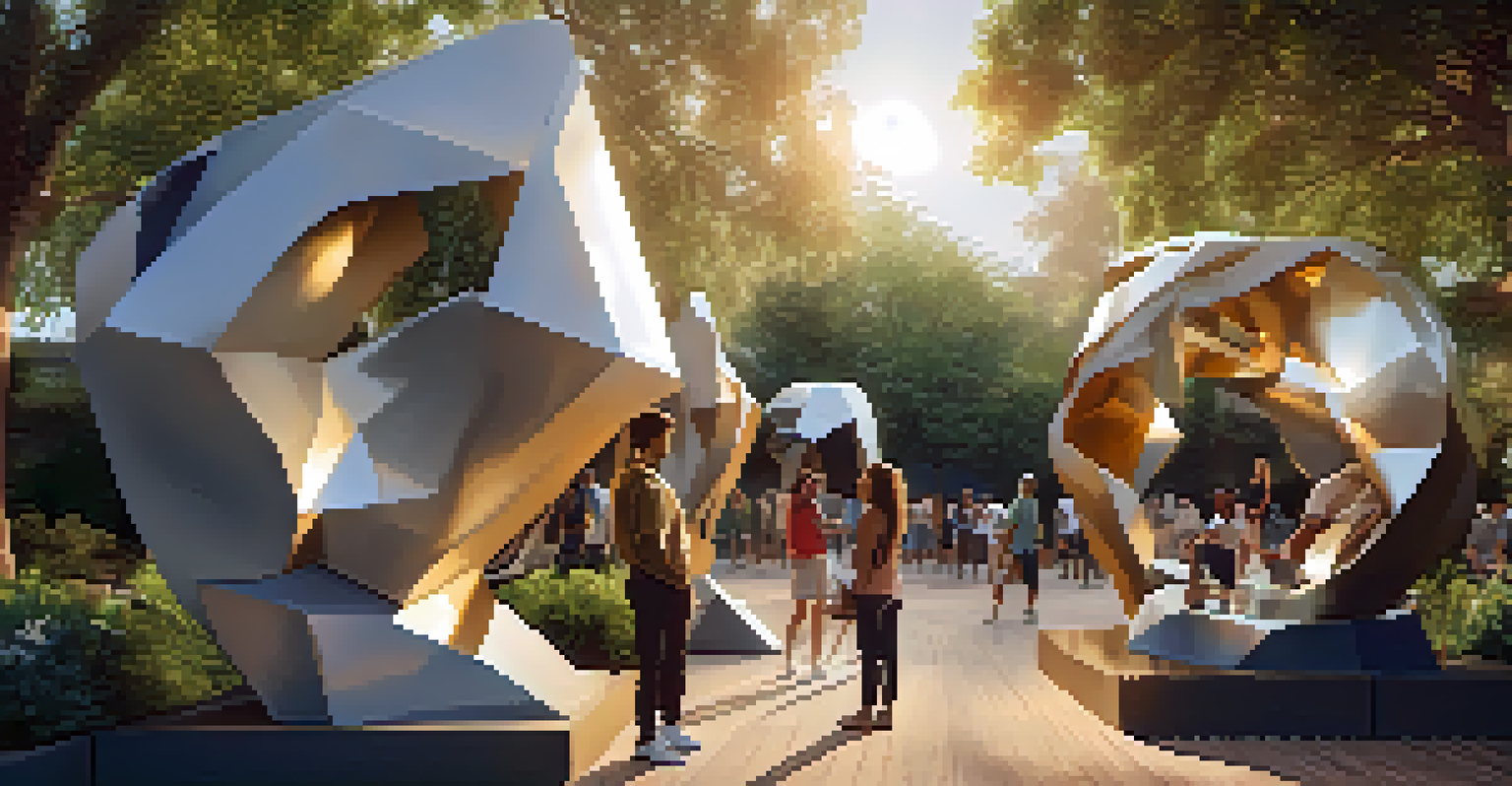Art and the Fight Against Racial Injustice

The Historical Connection Between Art and Activism
Art has always been a powerful tool for social change, especially in the fight against racial injustice. From the Harlem Renaissance to modern street art, artists have used their craft to voice resistance against oppression and inequality. These artistic movements not only reflect society's struggles but also inspire action and solidarity among communities.
Art is not freedom, it is a responsibility.
Consider the iconic works of artists like Jacob Lawrence, whose paintings depicted the African American experience during the Great Migration. His vivid imagery conveyed the hardships faced by his community while also celebrating their resilience. Such art serves as a reminder of the past and a call to action for today’s audience.
By intertwining creativity with activism, artists challenge societal norms and encourage conversations about race. This historical connection illustrates how art can act as both a mirror and a hammer, shaping perceptions and driving change.
Modern Artists Amplifying Voices Against Injustice
Today, numerous contemporary artists are harnessing their platforms to address racial injustice. Figures like Kehinde Wiley and Ai Weiwei are not just creating art but are also making bold statements about equality and human rights. Their work often blends traditional techniques with modern themes, provoking thought and inspiring dialogue.

For instance, Wiley's portraits of Black individuals set against elaborate backgrounds challenge historical narratives of power and representation. His art invites viewers to reconsider who is celebrated in the art world and society at large. This reimagining of representation is crucial in the ongoing fight for racial justice.
Art as Activism Against Injustice
Artists have historically used their work to challenge societal norms and inspire action against racial injustice.
As these artists take center stage, they empower others to use their creativity as a means of protest. By sharing their stories and experiences through art, they contribute to a larger narrative that seeks to dismantle systemic racism.
The Role of Public Art in Community Activism
Public art plays a significant role in the fight against racial injustice, transforming community spaces into platforms for activism. Murals, installations, and performances in public settings can provoke thought and foster community engagement. They serve as visual reminders of the ongoing struggles faced by marginalized groups.
The role of the artist is to make the revolution irresistible.
Take, for example, the powerful murals created in response to the Black Lives Matter movement. These artworks not only beautify neighborhoods but also convey urgent messages about equality and justice. They invite passersby to reflect on their own beliefs and actions regarding racial issues.
By turning public spaces into canvases for social commentary, artists create opportunities for dialogue and awareness. This collective expression fosters a sense of unity and encourages communities to stand together against racial injustice.
Art as a Means of Healing and Expression
For many, art serves as a form of healing in the aftermath of racial trauma. Creative expression allows individuals to process their emotions and experiences, turning pain into powerful narratives. This therapeutic aspect of art can be especially significant for those affected by racial injustice.
Art therapy programs often focus on communities of color, helping individuals articulate their feelings and experiences through various mediums. This not only aids in personal healing but also fosters a sense of community and solidarity among participants. Sharing these stories through art can amplify voices that are often silenced.
Public Art Engages Communities
Murals and installations transform public spaces into platforms for dialogue and awareness about racial issues.
Ultimately, the healing power of art can inspire hope and resilience. By transforming personal and collective pain into art, individuals contribute to a broader movement for justice and equality.
Social Media: A New Canvas for Activism
In today’s digital age, social media has emerged as a vital platform for artists advocating against racial injustice. It allows for the rapid dissemination of artwork and messages, reaching a global audience in an instant. This democratization of art empowers individuals to share their perspectives and engage in activism from anywhere.
Artists like Amanda Gorman and street artists who create viral content have harnessed social media to draw attention to racial issues. Their work not only spreads awareness but also encourages others to participate in the conversation. This collective online activism can amplify the impact of traditional art forms.
As artists utilize platforms like Instagram and TikTok to showcase their work, they create a sense of community and urgency surrounding racial justice. This digital canvas enables diverse voices to emerge, fostering a more inclusive dialogue about race and identity.
Art Collaborations Driving Change
Collaborative art projects have become a powerful mechanism for addressing racial injustice. By bringing together artists, activists, and community members, these initiatives create a shared space for dialogue and creativity. This collaborative spirit can amplify messages and foster deeper connections among participants.
Examples abound, such as the 'Mural Movement' where artists join forces to create murals that tell stories of resilience and hope. These projects often involve community input, ensuring that the artwork resonates with local experiences and struggles. Such collaboration not only enriches the final piece but also strengthens community bonds.
Digital Platforms Amplify Voices
Social media empowers artists to quickly share their messages, fostering global conversations about racial justice.
Through these partnerships, art becomes a collective voice in the fight against racial injustice. By working together, artists and communities can create impactful narratives that resonate far beyond their immediate surroundings.
The Future of Art in Racial Justice Movements
Looking ahead, the role of art in the fight against racial injustice is more crucial than ever. As new generations of artists emerge, they bring fresh perspectives and innovative techniques to the table. This evolution will undoubtedly shape the future of activism and how messages are conveyed through art.
Emerging technologies, such as virtual reality and augmented reality, are also creating new avenues for artistic expression. These tools can immerse audiences in narratives that challenge their perceptions and encourage empathy. As artists continue to push boundaries, the potential for impactful storytelling grows.

Ultimately, the future of art in racial justice movements lies in its ability to connect, inspire, and mobilize. By embracing creativity as a form of resistance, artists can continue to drive change and advocate for a more just world.